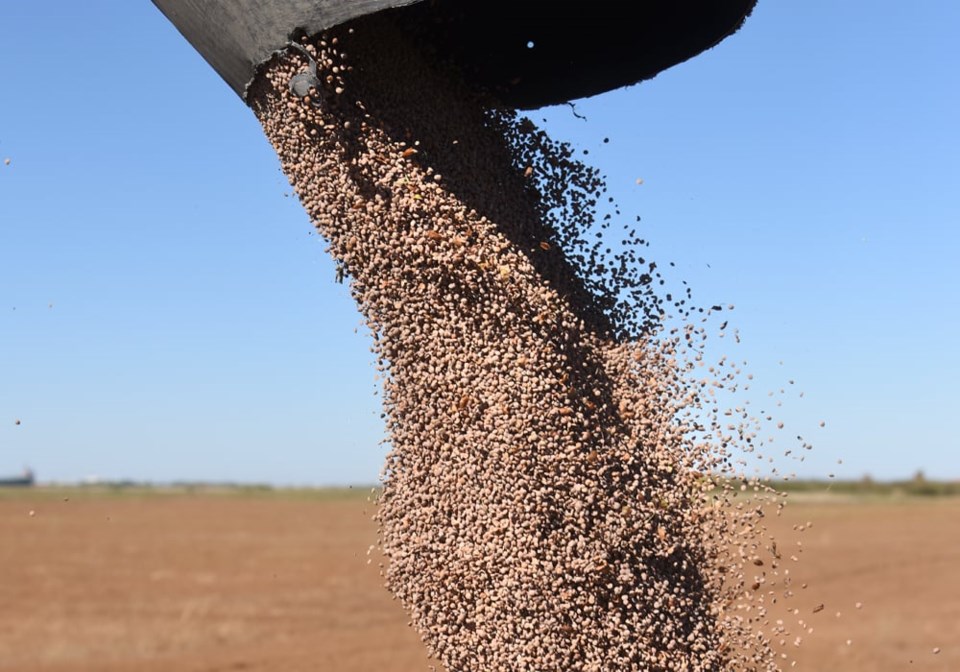WESTERN PRODUCER — India’s pigeon pea crop is in trouble, which could bolster demand for imported lentils in that country.
“The situation for Indian pigeon peas is really bad,” Gaurav Jain, analyst with AgPulse Analytica, said in an email.
Farmers planted 10.4 million acres of the crop as of Aug. 25, down five percent from last year.
Rains did not come until after the planting window was closed in the main growing regions.
Monsoon rainfall for the June 1 through Aug. 25 period has been seven percent below normal nationally.
Rains have been particularly dismal in Maharashtra, Karnataka and Rajasthan, with an uneven distribution of moisture in those states.
Maharashtra and Karnataka are the two biggest pigeon-pea-growing states, accounting for slightly more than half of the government’s targeted acreage of the crop.
Cumulative rainfall in Maharashtra has been eight percent below normal so far this monsoon season, while in Karnataka it has been 19 percent below average.
Jain expected final acreage to be six percent lower than last year and production to be down 15 percent.
He believed there will be some substitution of pigeon peas with Canadian green lentils.
“However, this will depend on the price spread in the landed prices for pigeon peas and Canadian green lentils,” said Jain.
“As prices for the latter are already on the rise, the substitution is dicey for now.”
Stat Publishing also believed India’s pigeon pea yields will struggle to reach last year’s levels if rainfall accumulations don’t recover in September.
Even if yields are the same as last year, production will amount to 3.25 million tonnes, well below the recent five-year average of 3.97 million tonnes.
“Output at that level could reduce the domestic supply of pigeon peas from an estimated 3.562 million tonnes this year to 3.28 million during the 2024 calendar year,” Stat publisher Brian Clancey said in a recent article.
“Such an outcome would be expected to support pulse imports during the coming year, creating the potential for lentil purchases to remain around 1.2 million tonnes in both the 2023 and 2024 calendar years.”
MarketsFarm analyst Bruce Burnett said India’s woes bode well for Canadian farmers.
“That’s positive news for pulse prices in general, but certainly for lentil prices, specifically for greens,” he said.
“That’s a very supportive factor.”
Pavan Talwar, an analyst with PKT Associates Inc., said the conventional wisdom that green lentils are a better substitute for pigeon peas than red lentils is wrong.
The only markets in India where that happens is with the Tamil Nadu Civil Supplies Corporation tenders for the free distribution of food and a little bit of commercial business in the state of Kerala.
“For the most part, and for most of India, the replacement market for (pigeon peas) is laal masur (red lentils), not greens,” Talwar said in an email.
“And that is why you have seen the price of Aussie red lentils soar by almost US$100 per tonne for new crop in less than one month.”
Ankush Jain, business head for pulses at Olam Agri India, stated during a recent Indian Pulses and Grains Association webinar that he believed the country has 800,000 to one million tonnes of pigeon pea stocks on hand.
In addition to the upcoming domestic harvest, he expected India to import one million tonnes from Africa during the next six to 12 months.
“That will definitely add to the supplies of pigeon peas in India,” he said.
Gaurav Jain thinks imports from Africa will be closer to 750,000 tonnes. But total imports should reach one million tonnes and that will not be enough to make up for India’s production shortfall.
G.P. Sharma, president of meteorology and climate change with Skymet Weather Services, said monsoon rainfall over the last four years has been normal or above normal because of La Nina.
But this year, there is an El Nino in place, which he called the most disruptive weather phenomena on Earth.
“It creates, let me tell you in no uncertain words, climatic chaos,” said Sharma.
All the droughts since 2000 have been triggered by El Nino.
The current El Nino has been largely benign so far. But he worries it started at the beginning of the monsoon season and its influence will grow in September, which could further reduce rainfall.
Sharma said half of India’s agriculture sector is rain dependent and 75 percent of that moisture falls during the monsoon season between June and September.
He has been tracking India’s monsoons for a long time and it is “showing a change” in the last decade or two.
The national long-term average rainfall during the monsoon period used to be 89 centimetres. It has dropped to 87 centimetres in recent years, a 22-millimetre decline.
“It’s a big number,” he said.
Heavy rain incidents have increased, but so too have the dry spells.
Contact [email protected]
You can no longer count on social media to deliver important news to you. Keep your news a touch away by bookmarking SASKTODAY.ca's homepage at this link.
Here's why you should bookmark your favourites.
Subscribe to SASKTODAY.ca newsletter to get our daily news to your inbox.




